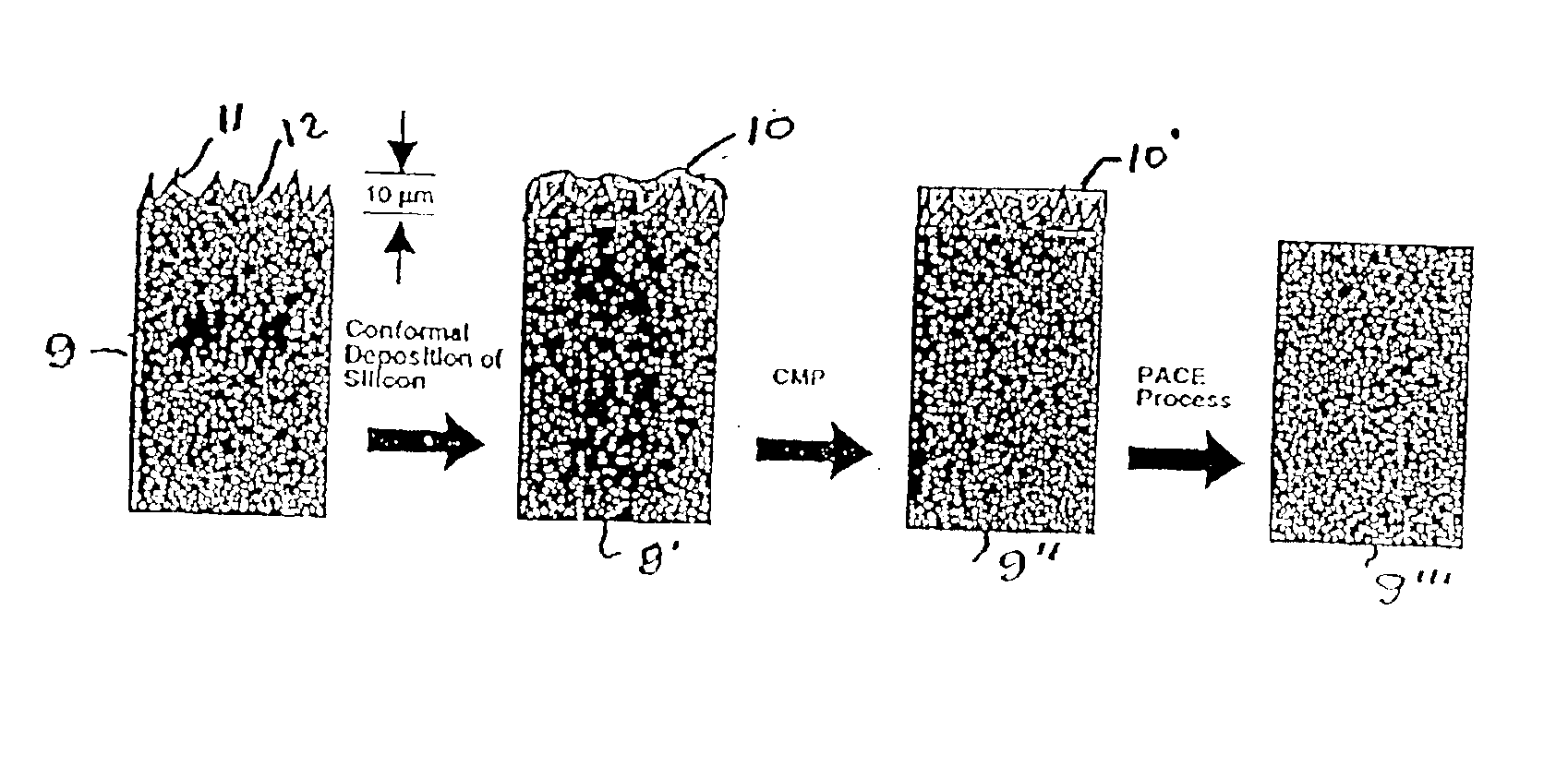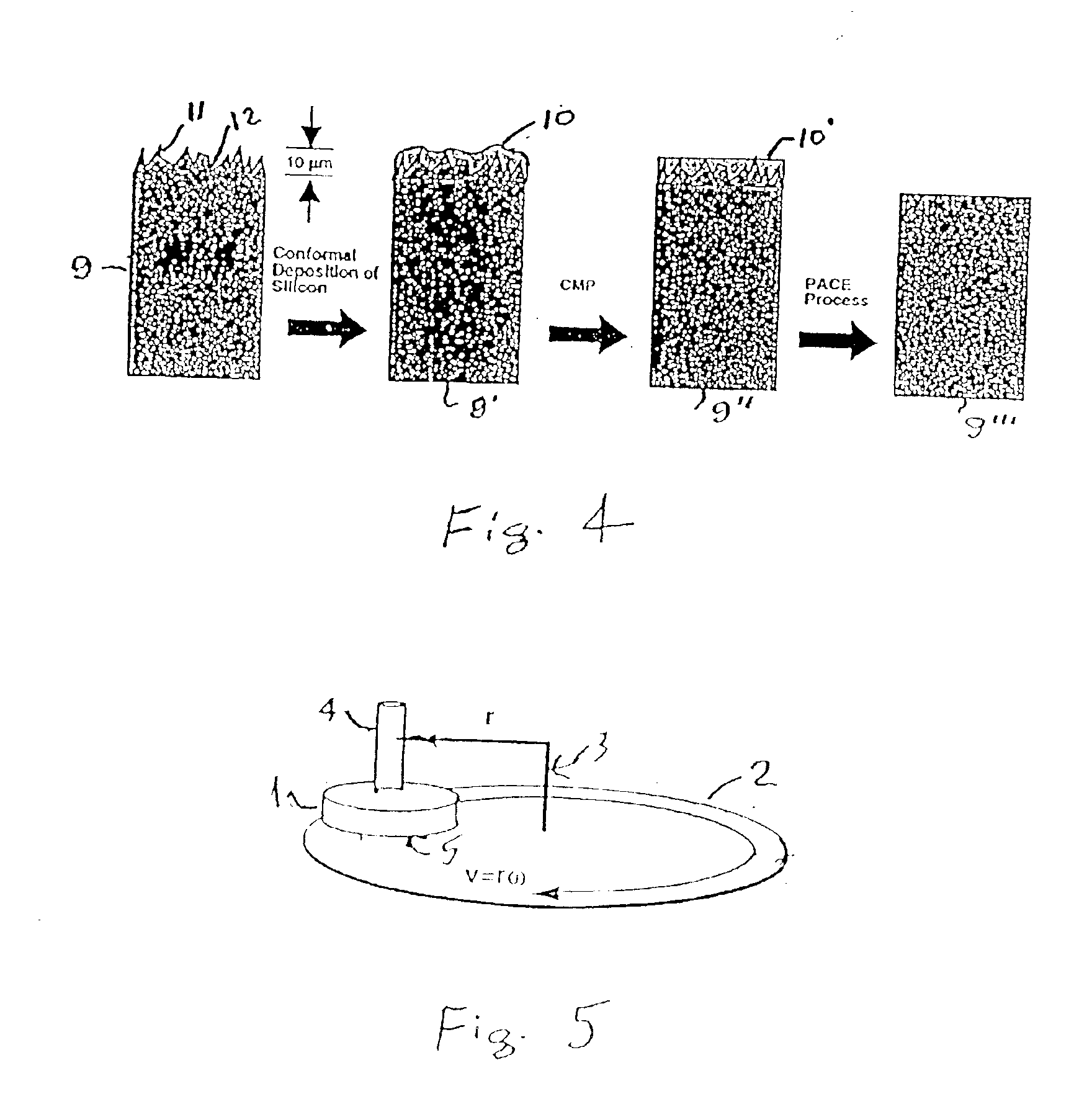Process for smoothing a rough surface on a substrate by dry etching
a technology of dry etching and rough surface, which is applied in the direction of grinding machines, manufacturing tools, lapping machines, etc., can solve the problem of roughening the surface instead of polishing
- Summary
- Abstract
- Description
- Claims
- Application Information
AI Technical Summary
Benefits of technology
Problems solved by technology
Method used
Image
Examples
example i
[0064]A 1 cm2 diamond substrate prepared by chemical vapor deposition is shown in FIG. 8a, which microphotograph is shown at 50× magnification. The surface roughness was about 30 microns (peak-valley) and the overall substrate thickness was about 1.5 mm. The sample was degreased with solvents (acetone, methanol, and water) and dried prior to plasma etching. The PACE processing conditions were as follows: plasma gases (air mixture consisting of 78% nitrogen, 20% oxygen, 2% water vapor), RF power of 300 watts, sample temperature 23° C., and an etch rate 0.5 microns / min. As shown in FIG. 8b, the gross roughness was removed from the diamond surface after PACE processing. In this example 350 microns of the original substrate was removed in order to achieve this smooth surface condition. In this connection the root mean square of the surface roughness was about 0.10 micron.
example ii
[0065]In accordance with a specific example of the present invention advantage is taken of the smoothness achieved by the PACE process except that the diamond surface is first coated with a composition comprising SiO2 by the spin-on-glass process so as completely to encapsulate the substrate surface with coating at a depth of about 40 microns. In order to achieve this thickness, a series of thin dielectric layers of the coating material are sequentially piled on top of each other until the original peaks of the substrate are no longer visible. After the coated surface has been formed, the entire surface is mechanically polished with a polishing composition comprising potassium hydroxide in combination with a polishing rouge of diamond paste and water for between 10 and 60 minutes so as to achieve diminishing the thickness of the coating to within no more than 5 microns of the protruding peak portions of the substrate. In any event polishing is immediately halted as soon as contact i...
PUM
| Property | Measurement | Unit |
|---|---|---|
| sizes | aaaaa | aaaaa |
| roughness | aaaaa | aaaaa |
| roughness | aaaaa | aaaaa |
Abstract
Description
Claims
Application Information
 Login to View More
Login to View More - R&D
- Intellectual Property
- Life Sciences
- Materials
- Tech Scout
- Unparalleled Data Quality
- Higher Quality Content
- 60% Fewer Hallucinations
Browse by: Latest US Patents, China's latest patents, Technical Efficacy Thesaurus, Application Domain, Technology Topic, Popular Technical Reports.
© 2025 PatSnap. All rights reserved.Legal|Privacy policy|Modern Slavery Act Transparency Statement|Sitemap|About US| Contact US: help@patsnap.com



